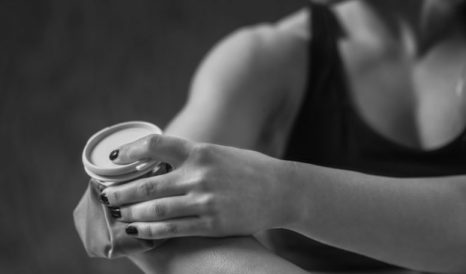Golfer’s Elbow: Symptoms, Causes and Treatments
If you have pain on the inside of your elbow joint, there’s a chance you have a tendon injury known as golfer’s elbow. Luckily, treatment for this condition is usually straightforward.
While it is common in golfers, due to the repeated action of the golf swing, it can occur as a result of any activity that involves lifting, hitting with a racquet or throwing.
If you have developed golfer’s elbow symptoms, the best advice is to get medical advice as soon as possible, so you can get started on a treatment programme.
What is golfer’s elbow?
Golfer’s elbow – or medial epicondylitis – is the inflammation of a tendon that connects your upper arm bone (humerus) to the muscles in your forearm. These tendons and muscles control your wrist and fingers.

Golfer’s elbow is usually an overuse injury – repeated stress on the forearm muscles can lead to tiny tears in the tendon fibres. These tears result in inflammation, pain and weakness in the elbow.
It is not to be confused with tennis elbow, which affects the tendon on the outside of your elbow, although it is often caused by similar activities.
What are the causes of golfer’s elbow?
There are a number of activities that typically lead to golfer’s elbow, aside from golf.
Some of the more common ones include:
- Racquet sports: improper technique with tennis strokes, especially with the backhand. It can also be caused by excessive use of topspin, and using a racket that’s too small or heavy.
- Throwing sports: poor throwing technique in sports such as cricket, archery, rugby or javelin throwing.
- Forceful, repetitive movements in your job: particularly common in construction, plumbing and carpentry.
- Weight training: lifting weights using improper technique, such as flexing your wrists during a biceps exercise.
You are more at risk of golfer’s elbow if you are over 40 and do these repetitive activities for over two hours a day.
What are the symptoms of golfer’s elbow?
The following symptoms are typical in people who have developed golfer’s elbow:
- Pain and tenderness on the inside of your elbow, which can also extend along the inner side of your forearm.
- Pain that worsens with certain movements, such as swinging a golf club, gripping something or making a fist.
- Pain that starts as a niggle and gradually gets worse over time.
- Stiffness in your elbow as you try to bend it.
- Weakness in your hands and wrists.
- Numbness or tingling in your fingers — usually the ring and little fingers.
How is golfer’s elbow treated?
Tendon injuries can respond to rest and ice, along with over the counter anti-inflammatories. However, without building up the muscles correctly, introducing warm-up exercises before your activity and changing your technique, you are likely to get a recurrence of the problem.
For this reason, it is important to consult a sports medicine professional to assess your condition.
It may be necessary to get an MRI or x-ray scan to rule out other conditions of your elbow such as osteoarthritis or soft tissue damage within the joint.
Once the acute pain has been reduced with rest, ice and anti-inflammatories, there are a number of treatment options.
Exercises: A physiotherapist can give you simple exercises to help with rehabilitation and add a stretching and strengthening programme to add to your warm-up. They can also give you advice on altering your technique to prevent re-injury.
Electrotherapy (ultrasound or laser): High energy beams can be used to treat golfer’s elbow by reducing inflammation and stimulating healing.
Sports massage: If you have had golfer’s elbow for some time, there may be a build-up of scar tissue on your tendons. This can be relieved by sports massage, which can help reduce tension in the muscle and improve healing.
Injections: Steroid injections can help to reduce inflammation in ongoing symptoms. Plasma injections can be used to stimulate healing.
Surgery: Where the tendon is badly frayed, it can either be released or repaired during surgery.
As I always advise, if you have ongoing pain in your joints, it’s very important to get a diagnosis sooner rather than later. So many conditions can be treated conservatively, and with the right physiotherapy, you can avoid worsening the problem. However, if you do end up with more serious damage, reconstructive surgery is often the most effective solution.
Simon Moyes is an internationally renowned orthopaedic surgeon and leader in the field of arthroscopic (keyhole) surgery. His Capital Orthopaedics team works from The Cromwell Hospital in London, with its state-of-the-art diagnostic and surgical equipment, and top sports medicine professionals.
Contact Simon Moyes for an expert diagnosis and treatment of all your elbow problems.
